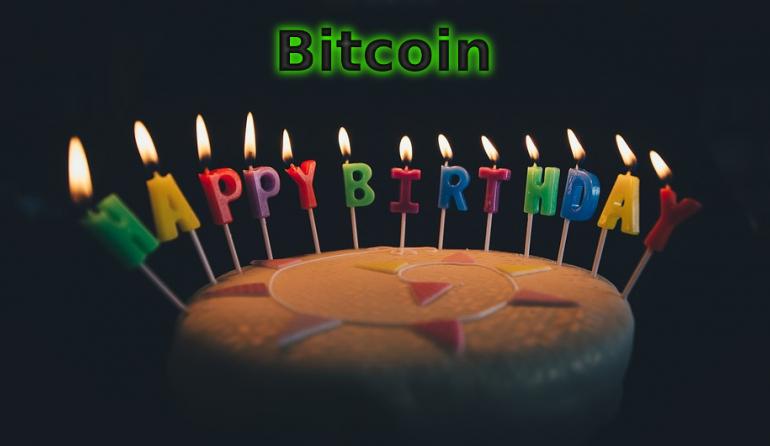
On November 1, 2008, an unknown person called Satoshi Nakamoto sent a message to "The Cryptography Mailing List." In that message, Nakamoto explained he was working on a new electronic cash system that was entirely peer-to-peer (P2P) with no trusted third party and gave a link to a paper titled “Bitcoin: A Peer-to-Peer Electronic Cash System.” That day with that message and with that whitepaper, nine years ago, Bitcoin was born.
Nakamoto wanted to build a system which would solve the inherent weaknesses of the trust based model upon which commerce was conducted for hundreds of years. Relying on financial institutions serving as trusted third parties to process payments means that non-reversible transactions are not possible, transaction costs are high due to mediation and fraud is unavoidable.
To address these weaknesses, Nakamoto devised Bitcoin to eliminate the need for trusted third parties. From the first sentences of his paper, he envisaged Bitcoin to be a purely peer-to-peer version of electronic cash which would “allow online payments to be sent directly from one party to another without going through a financial institution.”
The Bitcoin White Paper
Nakamoto’s paper was brilliant and illuminating in many areas. Bitcoin was based on the known framework of coins made from digital signatures. But Nakamoto understood, that such a digital cash system would be incomplete without a way to prevent double spending. So in his paper, he offered a complete solution to this double-spending problem. The answer, in Nakamoto’s words, was a P2P network which timestamps transactions by hashing them into an ongoing chain of hash-based proof-of-work, the blockchain. With the distributed blockchain where all transactions are publicly announced, and the Proof-of-Work system (based on Adam Back’s Hashcash) to provide a means to agree on a single history, transactions in Bitcoin are computationally impractical to reverse protecting users from fraud.
Nakamoto even anticipated increasing hardware speed and varying interest in running nodes over time. Thus he described the proof-of-work difficulty to be determined “by a moving average targeting an average number of blocks per hour.”
Nakamoto released the source code for Bitcoin two months later, in January 2009. Then the peer-to-peer decentralized network he envisaged in his paper started to become a reality. Early adopters and crypto-enthusiasts began making transactions. Slowly but steadily, bitcoin use was spreading, and its value in fiat money was increasing. Nowadays the protocol is used by millions around the globe and bitcoins are accepted by an increasing number of merchants – even Amazon is supposed to be ready to accept it a means of payment.
Bitcoin Is Surging
So, this Halloween, on November 1, 2017, Bitcoin will turn nine years old. And we, the supporters of thus break-through cryptocurrency, have every right to celebrate Bitcoin’s birthday. In 2017, Bitcoin experienced a tremendous growth in price and capitalization. The brainchild of Nakamoto has gone up by over 300 percent since the start of 2017 – its price broke the $5,000 mark and then the $6000 mark. Its market capitalization recently surpassed $100 billion, and Bitcoin has apparently caught the eye of investors and media outlets.
One bitcoin was worth 0.0001 dollars in June 2009. Fast forward today, that one bitcoin is worth more than 6,000 dollars. Or if you prefer, one bitcoin is worth more than 4 ounces of gold!
Is It A Bubble?
Many traditional marketers have repeatedly called Bitcoin a "bubble", but Bitcoin continues to rise and thrive. JustCryptoNews.com has attempted to explain why Bitcoin is not a "bubble". We still believe that, despite fears and uncertainty emanating from recent and upcoming hard forks (Bitcoin Cash, Bitcoin Gold, Segwit2X) and the evergoing scaling debate, nothing seems to stop the cryptocurrency in short and mid-term.
Why? Because of Bitcoin’s unique properties, as Nakamoto described them nine years ago:
- Double-spending is prevented with a peer-to-peer network.
- No mint or other trusted parties.
- Participants can be anonymous.
- New coins are made from Hashcash style proof-of-work.
- The proof-of-work for new coin generation also powers the network to prevent double-spending.
These properties allow many of us to believe Bitcoin is, simply put, revolutionary and it has a bright future ahead. We cannot be sure if it will ever reach “the moon,” universal acceptance, etc., but Nakamoto’s paper will always remain a brilliant landmark in the development of cryptocurrencies. And Bitcoin will still be the first complete cryptocurrency of mankind.
